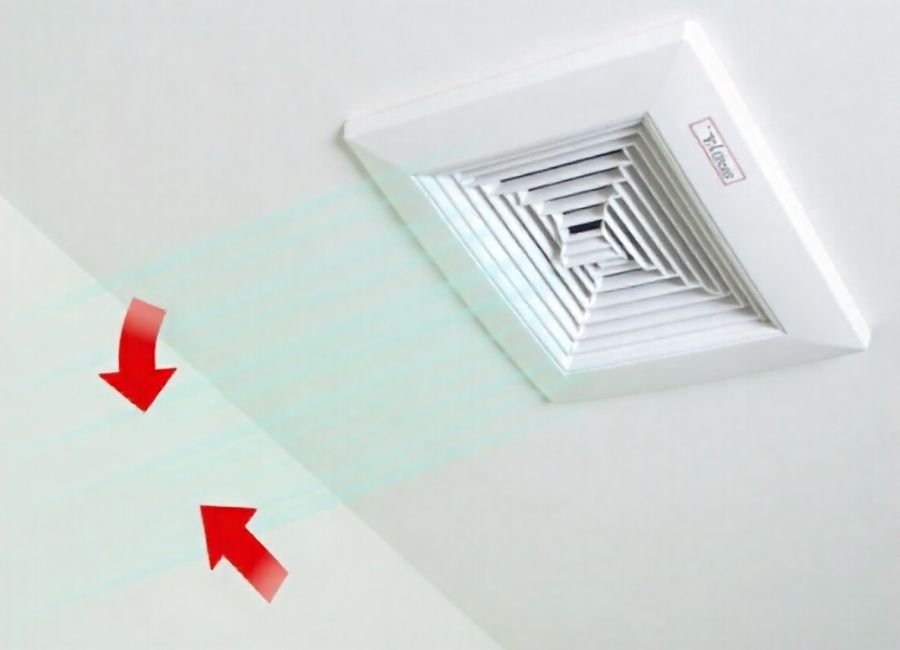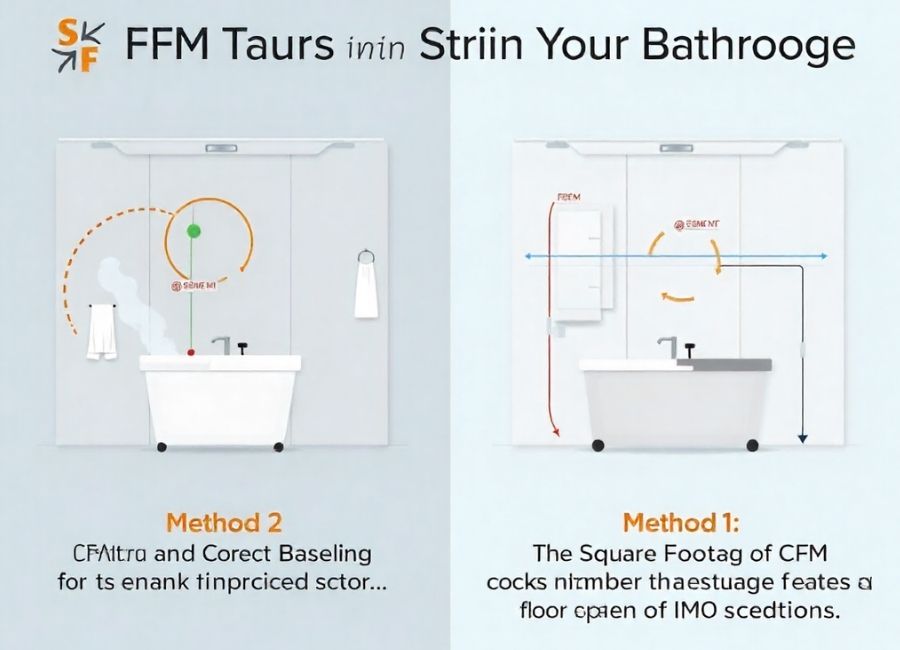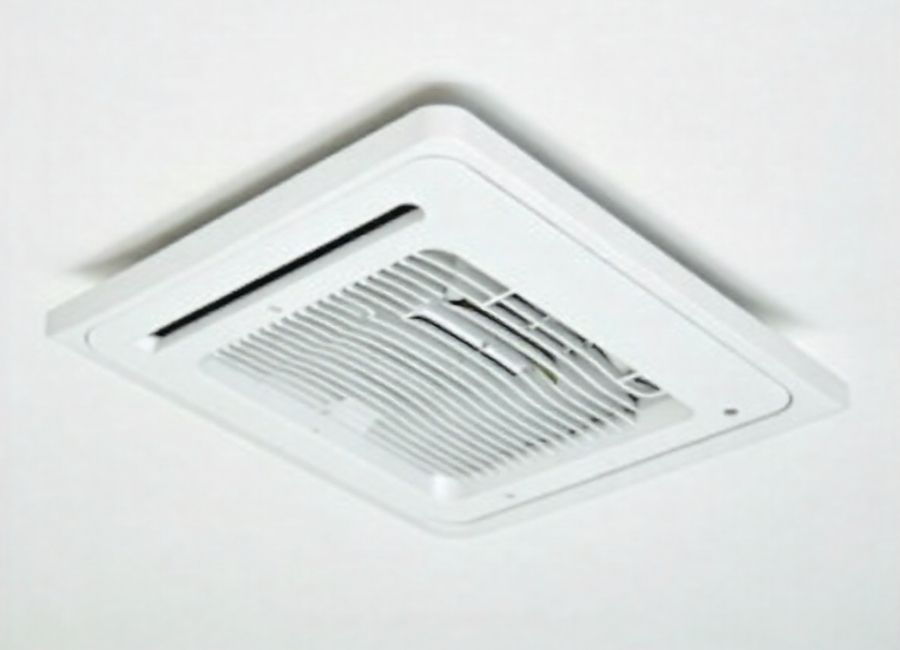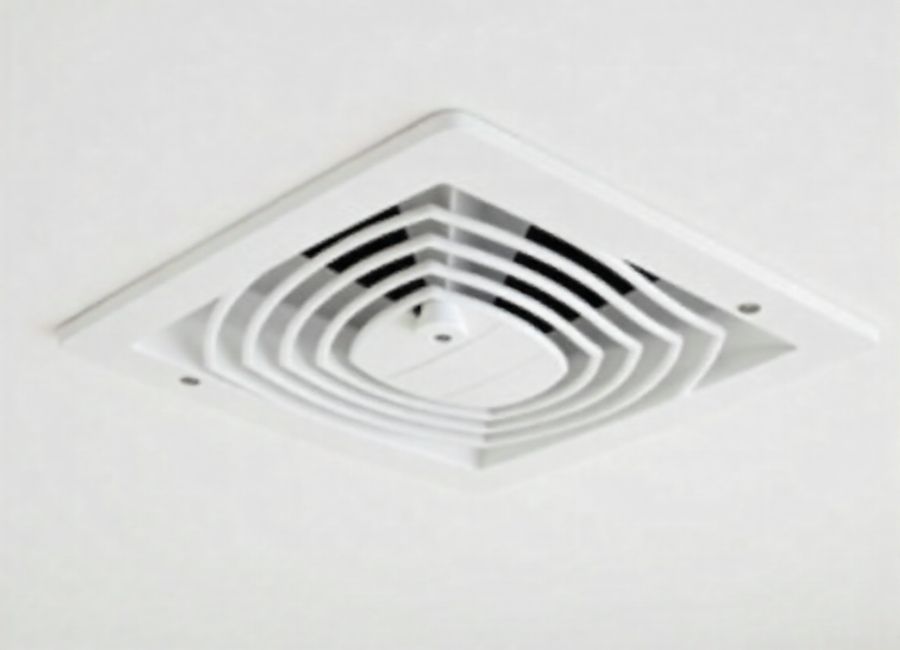A good bathroom exhaust fan is an unsung hero of home maintenance. It quietly works in the background to fight off mold, mildew, and unpleasant odors, protecting your paint, drywall, and air quality. But for a fan to do its job effectively, it needs to have the right amount of power, measured in CFM (Cubic Feet per Minute).
Choosing the right CFM rating ensures your fan can completely replace the air in your bathroom at a sufficient rate. A fan that’s too weak will struggle to clear out steam and moisture, leading to potential mold growth and peeling paint. Conversely, a fan that’s too powerful for a small space might be unnecessarily loud and energy-intensive.
This guide will walk you through everything you need to know to calculate the perfect CFM for your bathroom fan, ensuring a fresh, dry, and healthy environment.
What is CFM and Why Does it Matter?

CFM stands for Cubic Feet per Minute. It’s a measurement of airflow volume, indicating how much air a fan can move in one minute. A fan with a 100 CFM rating can move 100 cubic feet of air every minute.
In the context of a bathroom, the CFM rating tells you how quickly the fan can exhaust stale, moist air and replace it with fresh, dry air. The goal is to achieve a certain number of air changes per hour (ACH). The Home Ventilating Institute (HVI), a leading authority on residential ventilation, recommends that (Bathroom Ventilation, n.d.) a bathroom exhaust fan should be able to perform at least eight complete air changes per hour.
This rate is crucial for:
- Moisture Control: Showers, baths, and even running the tap release a significant amount of steam into the air. Proper ventilation removes this moisture before it can condense on walls, ceilings, and mirrors.
- Odor Elimination: An effective fan quickly gets rid of unpleasant odors, keeping your bathroom smelling fresh.
- Preventing Mold and Mildew: Mold and mildew thrive in damp, stagnant environments. By keeping the air circulating and dry, a fan eliminates the conditions that they need to grow.
- Improving Indoor Air Quality: Ventilation fans exhaust pollutants, allergens, and airborne particles, contributing to a healthier home.
How to Calculate the Right CFM for Your Bathroom

There are two primary methods for determining the correct CFM rating for your bathroom fan. The first is based on the room’s square footage, and the second is based on the number of fixtures.
Method 1: The Square Footage Formula
For most standard bathrooms, calculating CFM based on square footage is the simplest and most common method. The HVI recommends a baseline of 1 CFM per square foot of floor space for bathrooms under 100 square feet. (Bathroom Ventilation, n.d.)
Here’s how to do it:
- Measure the Room: Use a tape measure to find the length and width of your bathroom in feet.
- Calculate the Area: Multiply the length by the width to get the total square footage.
- Formula: Length (ft) x Width (ft) = Area (sq ft)
- Determine the CFM: The resulting number is your minimum required CFM.
Example:
If your bathroom is 10 feet long and 8 feet wide:
- 10 ft x 8 ft = 80 sq ft
- Therefore, you need a bathroom fan with a rating of at least 80 CFM.
According to HVI guidelines, you should always round up to the nearest 10. (How do I properly size an exhaust fan for my bathroom? | Bath Fans | Support, n.d.) So, if your calculation results in 74 CFM, you should look for an 80 CFM fan. It’s always better to have slightly more power than not enough.
Method 2: The Fixture Count Method
For larger bathrooms (over 100 square feet), the HVI suggests calculating CFM based on the number of fixtures in the room. (Bathroom Ventilation, n.d.) This method ensures the fan has enough power to handle the moisture and odors generated by multiple sources.
Assign a CFM value to each major fixture in your bathroom:
- Toilet: 50 CFM
- Shower: 50 CFM
- Bathtub: 50 CFM
- Jetted Tub (Jacuzzi): 100 CFM
Add up the CFM values for all the fixtures in your bathroom to find the total CFM required.
Example:
A large bathroom with a separate shower, a bathtub, and a toilet would require:
- Shower (50 CFM) + Bathtub (50 CFM) + Toilet (50 CFM) = 150 CFM
- In this case, you would need a fan with at least a 150 CFM rating.
Special Considerations for Enclosed Spaces
If your toilet is in a separate, enclosed room within the larger bathroom, it requires its own dedicated fan. (Bathroom Exhaust Fans – Home Ventilating Institute, n.d.) The same fixture calculation applies—you would need a 50 CFM fan specifically for that small space to ensure adequate ventilation.
Other Factors to Consider When Choosing a Fan

While CFM is the most important factor, there are a few other things to keep in mind when selecting a bathroom fan.
Sones: The Sound Level
The sone rating measures the quietness of a fan. (Sones Ratings and Charts, n.d.) A lower sone number means a quieter fan. For reference:
- 4.0 sones: The sound of standard television viewing.
- 3.0 sones: Typical office noise.
- 1.0 sone: The sound of a quiet refrigerator.
- 0.5 sones or less: Virtually silent.
For a main bathroom, look for a fan with a sone rating of 1.5 or less. In a guest bathroom or powder room where the fan is used less frequently, a rating of 2.0 to 3.0 might be acceptable. An ultra-quiet fan (1.0 sone or less) is ideal for primary bathrooms to create a more relaxing atmosphere.
Duct Size
The fan’s effectiveness is also dependent on the ductwork it connects to. Most modern bathroom fans are designed for 4-inch, 5-inch, or 6-inch ducts. Using a duct that is too small for your fan’s CFM rating can restrict airflow, increase noise, and reduce performance. Always check the manufacturer’s specifications and ensure your ductwork is the correct size, as straight as possible, and properly sealed.
Energy Efficiency
Look for fans with an ENERGY STAR® certification. These models are designed to use less energy than standard fans, saving you money on your electricity bills without sacrificing performance. (Ventilation Fans | ENERGY STAR, n.d.) They use more efficient motors and have better aerodynamic blade designs.
Upgrade Your Bathroom’s Air Quality
Choosing the right bathroom fan is a small but critical decision for maintaining a healthy and comfortable home. By calculating the correct CFM based on your bathroom’s size or fixtures, you can ensure your fan has the power to effectively combat moisture, odors, and mold. Don’t forget to also consider the fan’s sound rating, duct size, and energy efficiency to find the perfect model for your needs.
With the right fan installed, you can breathe easier knowing your bathroom is well-ventilated and protected for years to come.ns, plus prevention techniques.











